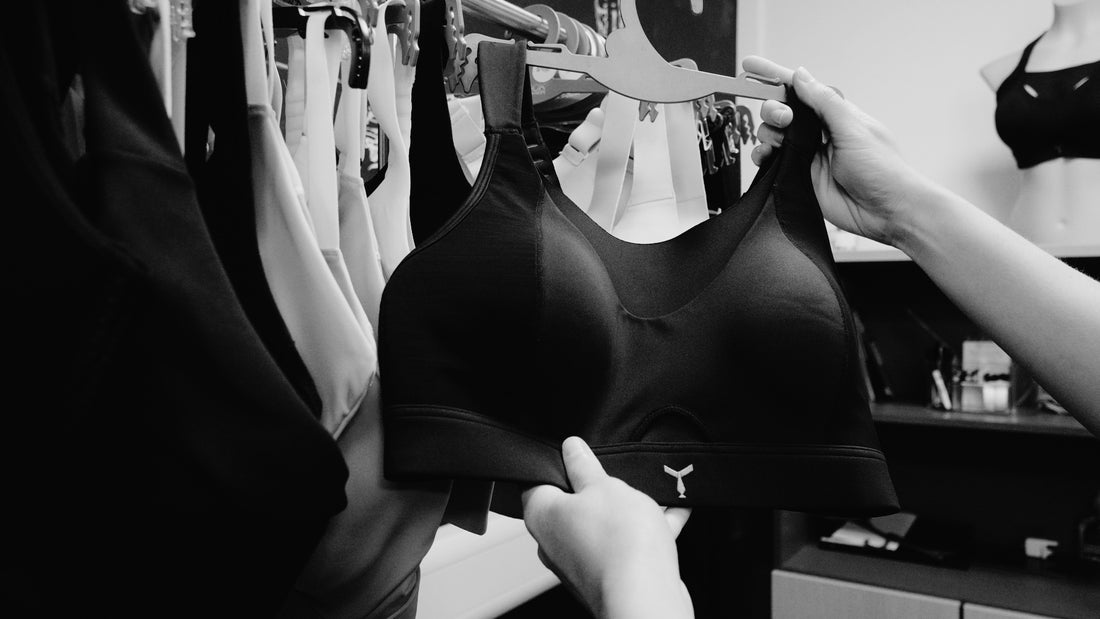Many women have faced the disappointment of purchasing a bra that at first fits perfectly, only to discover it no longer provides proper comfort or support after a few months. Despite holding onto the size indicated on the tag and the investment made, discomfort often leads to completely avoiding the ill-fitting bra. Whether the wearer has gone up or down a size, issues like painful shoulder straps and inadequate cup support can arise, highlighting the changing nature of breast size. Therefore, it's advised to get remeasured and refitted annually to ensure optimal comfort and support.
The significance of sizing extends beyond mere comfort—it directly impacts your health.
Before delving into this matter, it's crucial to consider factors that could potentially alter the size of your breasts.
The Royal Women’s Hospital in Australia states the following are commonly known for altering breast size:
- Hormonal changes in your menstrual cycle phases
- Weight loss or gain
- Pregnancy
- Breastfeeding
- Aging
Hormonal changes
During puberty, sex hormones increase in the body, including estrogen. This hormone is responsible for physical changes such as the development of the breasts. When you develop a menstrual cycle, your hormones work on a 28-day calendar, and estrogen (and other hormones) levels rise and fall. This fluctuation has a direct impact on breast volume and shape.
A menstrual cycle has 4 phases: menstruation, follicular, ovulation, and the luteal phase. During each of these phases, the level of hormones in your body will change. See the graph below (click for source).
Estrogen is directly linked to changes in breast volume during menstrual cycles. When estrogen is at its highest, you might find yourself loosening on your shoulder straps and underband, or opting for a yoga-bra kind of day.

When estrogen is at its lowest is the best time to measure yourself and choose a new bra. During this time, breasts are at their most unaffected and make for the truest fit.
Menopause
During menopause, hormonal shifts can affect breast size for many women, with about one in five needing a different bra size. While most may find they need a bigger size, only about 1% might need a smaller one. As estrogen levels drop, breasts may become less firm and more fatty, which could make them seem less full and more flat. This awareness is helpful when choosing bras that fit well and provide the right level of support and comfort during hormonal changes.
Weight Loss or Gain
Have you ever wondered why your breast size seems to fluctuate with weight gain or loss? Well, it's all about the composition of breast tissue. In the image attached below, you can see the intricate anatomy of the breast, showing it's mostly made up of fatty tissue. Gaining weight may result in more fat deposits in your breasts, causing them to increase in size. Conversely, if you lose weight, the fatty tissue in your breasts reduces, possibly resulting in a decreased cup size. It's a fascinating insight into how our bodies respond to changes in weight and highlights the dynamic nature of breast size.
Pregnancy & Breastfeeding
During pregnancy, hormones increase in the body, and yes, that includes estrogen. Estrogen stimulates the growth of the breast duct cells and creates another hormone, prolactin. This hormone stimulates milk production, and therefore breasts increase in size. Because producing breast milk often results in denser breast tissue, breasts will stay enlarged during this time. After breastfeeding, some women find their breasts return to their pre-breastfeeding size.
Aging
As women age, the size and shape of their breasts can change due to various factors throughout life. One significant influence is the natural aging process itself. Over time, the skin loses some elasticity and firmness, which contributes to breasts appearing less full and potentially sagging. Additionally, fluctuations in weight that commonly occur with age can also affect breast size. Furthermore, lifestyle factors such as pregnancy, breastfeeding, and smoking can also impact breast size and appearance as women age. While these changes are a normal part of the aging process, they can vary widely from person to person depending on genetic predispositions and individual health habits.
Just like your breasts, your bra also changes over time
Bras can undergo changes that can affect their fit and performance. Over time, you may notice that the elasticity of the band and straps diminishes, resulting in decreased support and increased pain. The fabric may stretch or wear out in specific areas leading to discomfort. While regular washing and care can prolong the lifespan of a bra, it's important to recognize when it's no longer providing the support and comfort you need, signaling the time for replacement.
Why Proper Sizing Matters
What happens if your bra size is either too small or too big? For starters, it's uncomfortable, something I'm sure you've felt before. But more importantly, it can impact your health.
The wrong size bra can cause:
- Breast pain (causing tenderness and breast cysts)
- Back pain
- Shoulder pain
- Neck pain
- Headaches/Migraines
- Bad posture (causing spinal dysfunction, joint degeneration, etc)
- Skin abrasions/chafing
- Nipple pain/chafing
- Rib cage pain
- Restricted airflow (causing muscle fatigue)
- Premature sagging
- Nerve damage to upper extremities (leading to finger numbness)
How to find the right size
With our easy 2 step guide and free measuring tape (UK only), we make it simple to find your perfect fit at Tigers Eye. Use this simple guide to find yours today!
Finding your right size and fit isn't just about comfort; it's about looking after your health. Checking your size regularly can prevent discomfort and pain while ensuring you get the support you need.
Experience unparraled comfort and support with Tigers Eye, the worlds first Female Veteran designed sports bra backed by science. Check them here.


Leave a comment